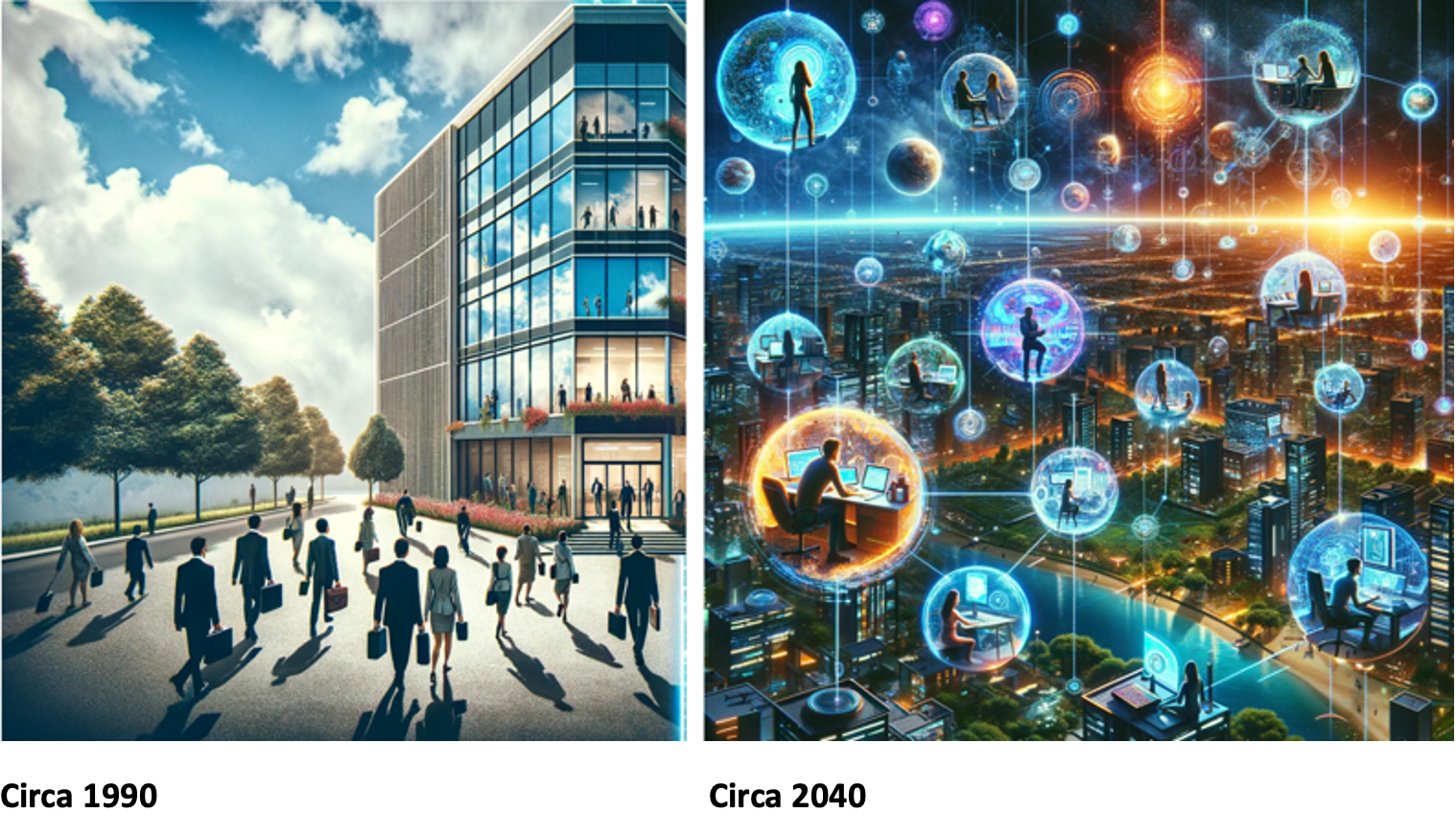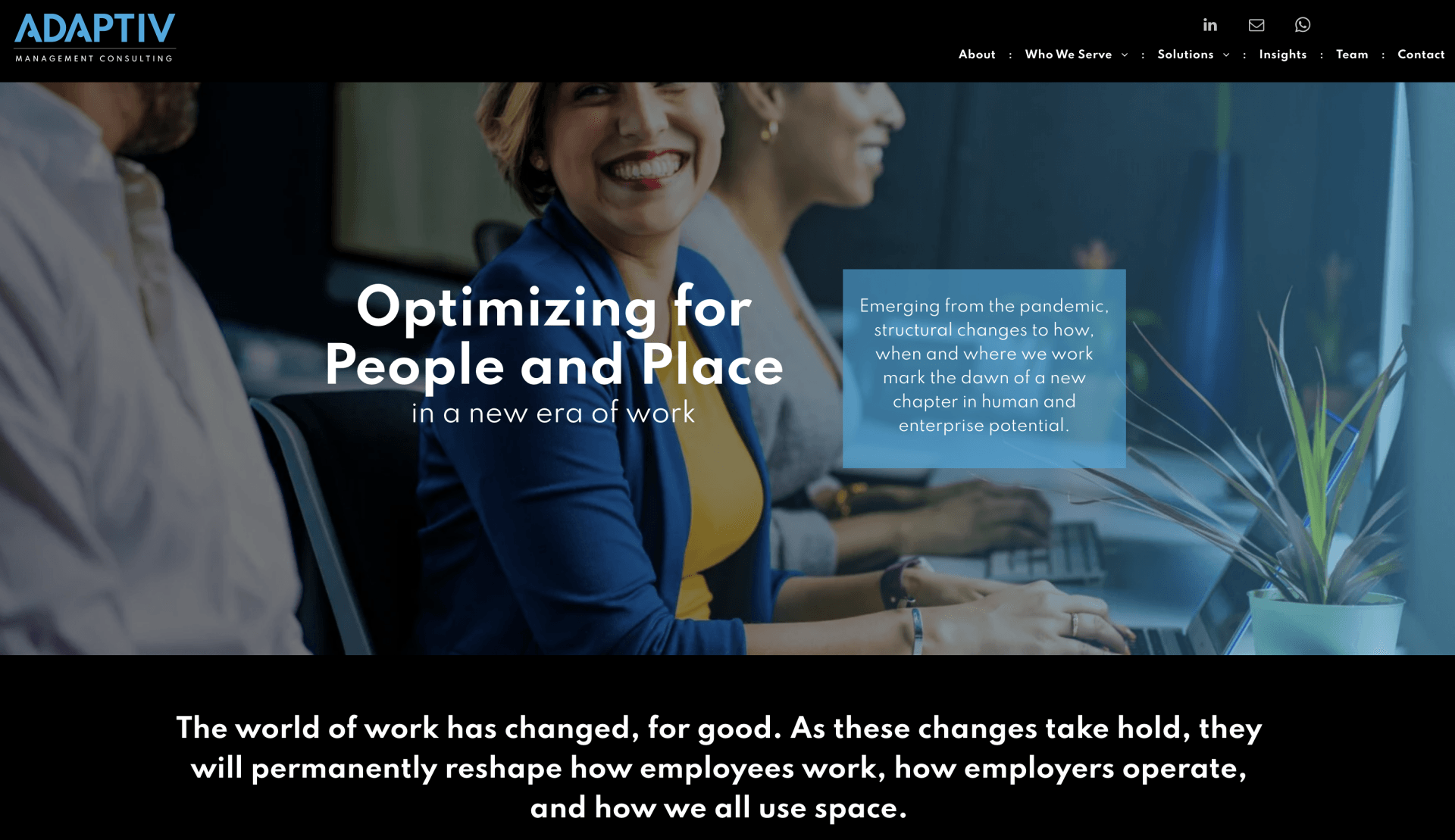



Let me start by saying that there is nothing definitive per se in this first writing. I am merely stirring the pot with some ideas that I will be expanding on in the coming weeks and months for those who are interested enough to take this ride with me.
I have been meaning to sit down and write this for a while. COVID 19 has, for better or worse, given us all time to hang out and ruminate on the bigger picture. By the way, I won't be prognosticating (today at least) about COVID’s long-term impact on things—there are enough people out there opining on that already. That said, I deeply believe that changes I expect to play out over the next 10+ years leading up to 2030 will still be happening anyway—now much faster—so maybe things mature by 2025, a full five years earlier. This by itself is pretty serious! Behavioral examples abound everywhere.
Nothing like a pandemic to accelerate evolution and adaptation! I'll get to the meat of what I wanted to communicate—not even the pandemic and the social upheaval underway changes my core theme.
Remember the baseball movie “Moneyball” from a few years back with Brad Pitt and Jonah Hill? Taken from a non-fiction book by author Michael Lewis, the story is one that has always struck me as analogous to the Commercial Real Estate industry—in particular to the office sector. It's a true story (allowing for some dramatic license to take place, of course)—and the events described did happen.
In the story, Billy Beane, the General Manager of the Oakland Athletics’ Major League Baseball team, with his back up against the wall, must find a solution to his challenges to have any chance for success. He puts a new model to work that is unproven, but he embraces it fully—he’s “all in.” Literally, no one believes in what he is doing—but he proves everyone wrong, and the Oakland Athletics enjoyed unprecedented success no one thought possible given the tools they had to work with. And--spoiler alert--they established a record-setting winning streak during the 2002 Major League Baseball season (20 straight wins!!) that still stands today, while eventually changing the belief system that had been in place for over 100 years.
Today, at least the following teams have adopted some, more or all of Billy’s model; the New York Mets, New York Yankees, San Diego Padres, St. Louis Cardinals, Boston Red Sox, Washington Nationals, Arizona Diamondbacks, Cleveland Indians, and the Toronto Blue Jays.
The linkages that struck me between baseball and commercial real estate were about how the decades-long way of doing things was overdue to challenge, and about how hard it was to actually bring meaningful change about. It took leadership, intestinal fortitude, and ultimately some proof before anyone was open to getting on board.
( as an aside, I love the story about how Steve Jobs reportedly pitched his board of directors on the idea of an” I-pad”; they asked for market confirmation of demand first to which he pointed out that no such product existed before so how could anyone “prove out demand”? Of course, the rest of the story is history due to Steve’s unshakeable commitment to what he believed in. And, yes, he had to browbeat his board into going along with his plan because they weren’t convinced.)
Back to our story… at the end of the 2001 season, our beleaguered GM is faced with replacing several of his best players. The Oakland “A”s budget is much smaller than other major league teams; by comparison to the NY Mets’ $125M annual player budget, Billy has about $44M in total to spend. He must rebuild his roster for the next season, and given this disparity, conventional wisdom says he shouldn’t expect to recruit and build a winning team.
He chances upon another team’s junior analyst who shows him a new model grounded in atypical analytics and data no one else cares about, but what Billy hears makes sense to him. He becomes deeply committed to putting this new paradigm to work, and it’s definitely not easy. No one thinks he is going to succeed. In fact, the status quo is either openly or quietly rooting against him.
They successfully develop a winning team—and in doing so fundamentally challenge the baseball institution’s legacy beliefs and tenets. “Success” for the Oakland “A”s challenges a way of life for an entire ecosystem of participants who aren’t thrilled about embracing change. Sound familiar?
And therein lies the strongest linkage to the Commercial Real Estate office industry—an industry unchallenged to re-evaluate its own core beliefs and tenets on display every day. Sure, the meteoric rise of WeWork caused some folks to wonder about where coworking fit in the scheme of things. With WeWork’s recent fall from grace, many feel like they can punt on worrying about that particular curiosity, at least for a while. It's fair to claim the sector and business model remain largely unchanged for the better part of the last 75+ years. Not unlike baseball, right? The CRE industry holds on tightly to ideas like:
As for a “value-added” relationship between supplier and end-user of the product, there is literally no opportunity to develop one. The end user's expectations are simple; “don’t call me, I’ll call you if something breaks and you had better be responsive. By the way, even if you are responsive, it’s not going to create a “sticky” relationship between us as we can get what you offer from pretty much any other building owner on our shortlist, thank you, very much.”
Sure, some new amenities are important now for a building to make it to the end user's shortlist, but the basic model is unchanged. Why is this?
I’ve been vocal about what I consider to be a structural disconnect in the Commercial Real Estate Industry vertical. That crippling disconnect is that the core customer for the office asset owner is the capital markets (other investors and lenders) and not the end-user of its office space product. This relationship (inconceivable in any other industry vertical from consumer products to technology to telecommunications to manufacturing et al.) is at the heart of what is stultifying any possibility for model change and innovation.
Consider the implications here; one must conclude that requirements for product innovation are driven by “asks” from investors and lenders, and not “asks” from the end-users of the product. How can innovation take place when the core customer—in this case, the capital markets—only wants investment yields, returns, and the risk adequately managed? As long as those are within range, where is the incentive to push for innovation in the business model or the product?
How does this link back to our heroes in the movie? In the film, Billy Beane must abandon the conventional approach to compensate for a resource disadvantage, and to do more with less. In Billy’s case, it meant mining new data to help develop a new strategy. But, to be honest, he only wanted to be competitive with others who had 300% more to spend—he didn’t really expect to outperform others with so much more horsepower. His focus had to shift away from recruiting expensive “star players” to achieving certain other statistical milestones that would lead them to more wins—an entirely different philosophy.
But he seriously over-achieved. Not only did the new model reduce disadvantage, but based on their success, the Boston Red Sox embraced this new model and won the World Series two years later. This would forever change how things were going to be done going forward. It was transformative —and there was no going back once that happened, only forward.
Am I the only one who has wondered why a building’s ownership spends $20M on fixing up an asset lobby—a traditional, broadly accepted asset management tactic--when that decision/capital allocation did absolutely nothing for the end-user of the product? It looks a lot like wealthy baseball team owners spending huge sums on prestige players instead of investing money where it actually counts, to build a winning game plan capable of supercharging returns. Upgrading the asset’s lobby resonates with capital and other investors, but does absolutely nothing for the businesses who occupy the asset and who, regardless of what that particular company actually does, share a singular objective; that is, to be more successful businesses.
Let me refer you back to the things the industry holds as tenets on the preceding page. Do ANY of those tenets help the end-user (the “tenant”) of the office space product be a more successful business? I don’t think so—and that lack of a compelling value proposition between the traditional supply-side and the end-user makes things more than overdue for re-engineering.
Helping the end-users of an office asset’s office space product become more successful businesses is not currently what asset owners are skilled at—or rewarded for, YET. Nonetheless, this is where ownership’s investment dollars need to go—but, like baseball, they don’t think that way yet. Someone needs to prove to them that thinking differently produces the returns/results they want—and that requires a Billy Beane going out on a limb because they believe making their end-users just that little bit more successful is the magic that helps them to deliver the returns/yields they aspire to produce.
As we have said, the commercial real estate industry’s office sector has remained relatively unchanged for the better part of 75+ years. That’s just fine if companies continue to lock in long-term credit leases, get better at planning for 5+ years, and continue to insist that people are only productive when coming into an office. However, I don’t believe any of these things , and neither should you.
Baseball is an institution, and in the last few years works very differently than it did for the first 100 years. Will the commercial real estate industry follow a similar trajectory?
In the coming writings, I will dissect some of this. I will hold our industry up to the light looking at the unmet demands from the end-user and the untapped potential for the supply-side.
In my opinion, we can keep this conversation going for a while to come. More from your humble narrator soon.


